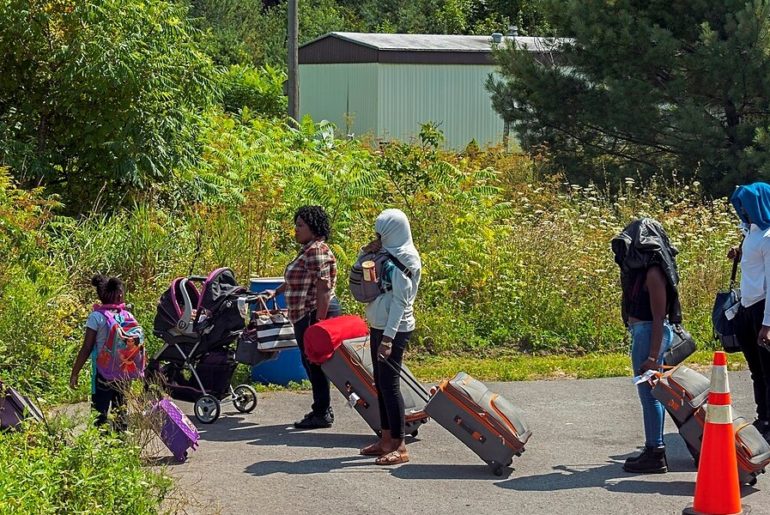On September 26, in a media note, the Department of Homeland Security and Department of Health and Human Services submitted the President’s annual Report to Congress on Proposed Refugee Admissions for Fiscal Year (FY) 2020 (this period runs from October 2019 to September 2020).
The statement mentioned that “The United States anticipates receiving more than 368,000 new refugees and asylum claims in FY 2020. Of them, 18,000 would be refugees we propose to resettle under the new refugee ceiling; we also anticipate processing more than 350,000 individuals in new asylum cases”.
This is a drastic cut in the refugee program for the year 2020, bringing it from 30,000 in 2019 to just 18,000. This is the lowest level of admissions the program has had since its implementation four decades ago, while refugee flows are increasing worldwide.
Who is considered a refugee?
Under U.S. law, a “refugee” is a person who is unable or unwilling to return to his or her home country because of a “well-founded fear of persecution” due to race, membership in a particular social group, political opinion, religion, or national origin. This definition is based on the United Nations 1951 Convention and 1967 Protocols relating to the Status of Refugees, which the United States became a party in 1968.
In the same media note, thethe priority countries for Refugee Admissions in 2020 are named, “The Trump Administration has also put a new, practical focus on assisting refugees where they are concentrated: in places like Bangladesh, Colombia, and Turkey”.
Important Data
The State Department and Department of Homeland Security (DHS) are the primary agencies that assess the viability of different refugee populations for admission, as well as the capacity of U.S. government officials to process them. We can compare the changes through the five last Fiscal Years:
For Fiscal Year (FY) 2015: Ceiling = 70,000 / Admissions = 69,920
For Fiscal Year (FY) 2016: Ceiling = 85,000 / Admissions = 84,988
For Fiscal Year (FY) 2017: Ceiling = 110,000 / Admissions = 53,691
For Fiscal Year (FY) 2018: Ceiling = 45,000 / Admissions = 22,500
For Fiscal Year (FY) 2019: Ceiling = 30,000 / Admissions = 28,100
Source: The State Department and Department of Homeland Security, Annual Flow Report 2019 and Pew Research Center, Key about refugees to the U.S.
That’s means that for 2020 with a ceiling of 18,000 refugees, 12,000 less refugees would be accepted in comparison with the Fiscal Year 2019.
Senior Administration Officials told the New York Times, the Trump administration will reserve 4,000 refugee slots for Iraqis who worked with the United States military, 1,500 for people from Central America and 5,000 for people persecuted for their religion. The additional 7,500 slots are for those who are seeking family unification and have been cleared for resettlement.
The International Rescue Committee estimates the United States currently has 30,000 people who have completed the Department of Homeland Security interviews for resettlement, far above the Presidential Determination announced. Nearly 9,000 are ready for travel.
The argument for the cut
U.S. Citizenship and Immigration Services (USCIS) Acting Director Ken Cuccinelli says in his statement on the Trump Administration’s proposed refugee ceiling for Fiscal Year (FY) 2020, “Our nation continues to face a security and humanitarian crisis at our southern border where hundreds of thousands of Central Americans who are not being persecuted in their home countries are using our asylum system to gain entry into the United States. The ongoing crisis has created an unprecedented asylum workload for USCIS and creates difficulty for legitimate asylum seekers who need protection.
Representatives of organizations working for human rights have also mentioned their position. Ryan Mace, Grassroots Advocacy and Refugee Specialist at Amnesty International USA said: “Sadly, this number isn’t based in fact”. “We know that we can vet them and resettle them at rates far higher than this – because the U.S. has done it for decades. This is purely a political decision, and one that couldn’t come at a worse time”.
David Miliband, President and CEO of the International Rescue Committee said, “This is a very sad day for America. This decision represents further damage to America’s leadership on protecting the most vulnerable people around the world. It has no basis in logic or need, damages America’s interests, and tarnishes her values. Refugee Resettlement is an essential lifeline that the U.S. provides for the most vulnerable refugees at a time of unprecedented global crisis”.
This situation brings us many questions: If only 18,000 refugees will be allowed in 2020, what will happen to the other more than 300,000 asylum applications? Should they return to their countries and continue to be victims of violence and persecution? And if there are priority countries, what will happen to people from other countries in South and Central America who fled violence a few months ago and are on the US border?

